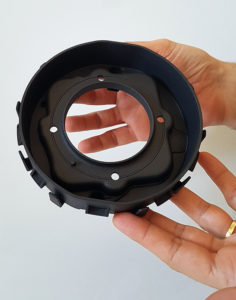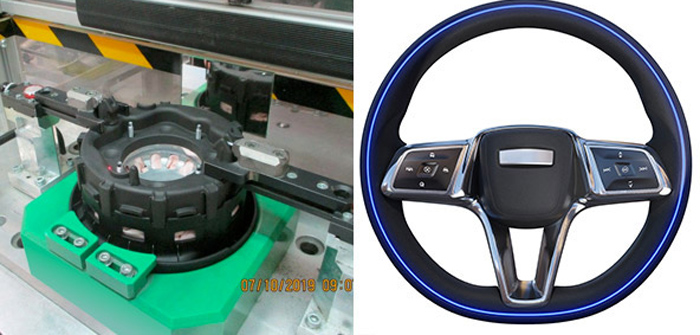Safety critical components must be subject to rigorous test programs that replicate real-world conditions as closely as possible. Therefore, when US airbag and safety system manufacturer Joyson Safety Systems started a project to explore the potential for additive manufacturing (AM) in the production of airbag housings for prototype testing, it needed to know any AM part matched the performance of its production counterpart.
Additive manufacturing offered the potential to produce a functional prototype housing within days instead of months, out of composite materials with similar mechanical, thermal properties and performance to the original materials. Provided the right material properties could be achieved, significant time and cost savings could be achieved by removing the need for high cost tooling for injection molding.
The first stage of Joyson Safety Systems’ research was to carry out a market analysis in order to find a composite material corresponding to the existing material (in this case, polyamide with 40% glass fiber reinforcement) used in the production of the airbag housing container through conventional injection molding processes.
A driver airbag (DAB) housing is normally produced with PA6-GF40 material. The complete airbag system consists of an inflator, an airbag cushion, a cover and a housing with attachment points on the steering wheel.
Daniel Alt and Samer Ziadeh from Joyson Safety Systems’ Core innovations team explained that the DAB “has to withstand a high amount of dynamic loads in addition to holding the inflator and the airbag cushion fixed in location during and after the deployment of the airbag system. This load is developed due to the pressure required to inflate the airbag, as a result the large stresses will directly be applied on the airbag system and more particularly on the DAB housing”.
 Test procedures are normally conducted at temperatures between -35°C and +85°C. Therefore, the material used for manufacturing the part is expected to have sufficient strength, impact resistance and heat stability to perform properly under different testing conditions.
Test procedures are normally conducted at temperatures between -35°C and +85°C. Therefore, the material used for manufacturing the part is expected to have sufficient strength, impact resistance and heat stability to perform properly under different testing conditions.
Joyson found that Italian manufacturer CRP Technology’s Windform Top-Line material matched its needs. It is produced from polyamide mixed with carbon fiber in a powdered form and is compatible with SLS AM processes.
A number of test DABs were manufactured and tested, with encouraging results achieved.
“The material exhibits excellent mechanical performance in terms of high strength and impact resistance as well a good thermal stability between a low and high range of temperatures (RT; 23°C, -35°C & 85°C),” said Alt.
“The prototype part demonstrated outstanding performance during various testing conditions. This has proved that AM parts have the required functionality for complete consideration in new product development.”



